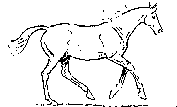![]()

|
THE PAMPAS, introducing those never ending horizons.... |
|
|
|
|
|
The pampas today are still the source of some of the best beef in the world and good crops, but they are also becoming home to new ways of national and international tourism. The town of Buenos Aires extends into immense plains covered with green pastures and thistle, doted with splendid and comfortable estancias (a mix of ranches and lordly manors) some transformed into comfortable country hotels for enjoyable stays, day visits or business meetings. This landscape of cattle, horneros and ombues provide a flavour of its own and different kinds of silences to work, rest, enjoy and discover yourself in nature. The gaucho with his attire, his horse, his mate, his spirit and sense of freeedom, his country wisdom and generosity gives the land its personality and distinction. "Mateadas" (sipping mate) and "guitarreadas" (listening the guitar) are the right scenario for a peculiar type of literature typically Argentinean, the gaucho tale, a song to his quality of heart and communion with keens and nature. It is not by chance that we say do me a "gauchada" implying connotations far beyond a mere "do me a favour" and giving a helping hand without distinctions.
|
 What exactly are the pampas that we know as
a valuable source of income and green pastures for open grazing? It is an area covering Buenos Aires and La Pampa and partially Santa Fe and Cordoba, each region with distinctive features of its
own, ranging from humid and semi humid to semi arid or dry. The pampas have experienced great changes of climate along the years, in a way as a consequence of
previous irrational "cleaning" of indigenous plants (e.g.
caldenes and algarrobos) to prepare soil for production and also for introducing game animals. Today ecotourism is gaining grounds in the whole area, with greater respect and care for nature.
What exactly are the pampas that we know as
a valuable source of income and green pastures for open grazing? It is an area covering Buenos Aires and La Pampa and partially Santa Fe and Cordoba, each region with distinctive features of its
own, ranging from humid and semi humid to semi arid or dry. The pampas have experienced great changes of climate along the years, in a way as a consequence of
previous irrational "cleaning" of indigenous plants (e.g.
caldenes and algarrobos) to prepare soil for production and also for introducing game animals. Today ecotourism is gaining grounds in the whole area, with greater respect and care for nature. 

